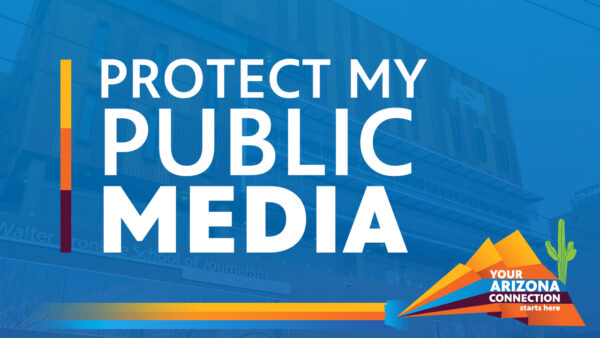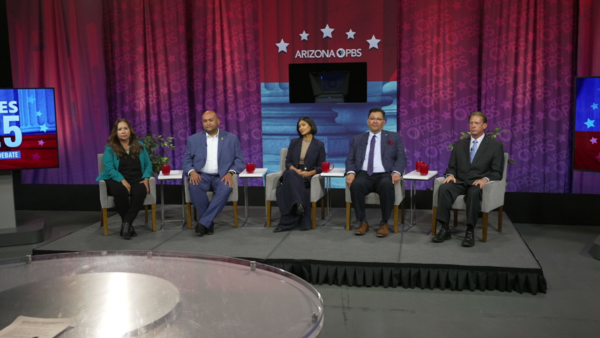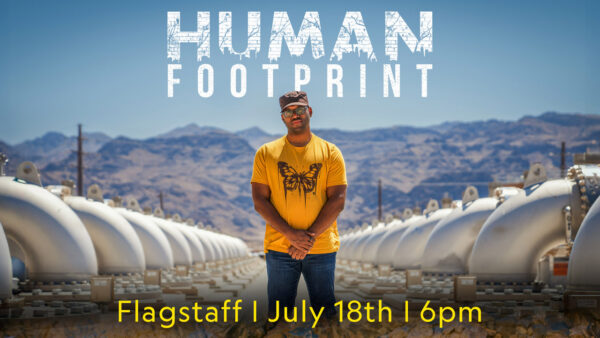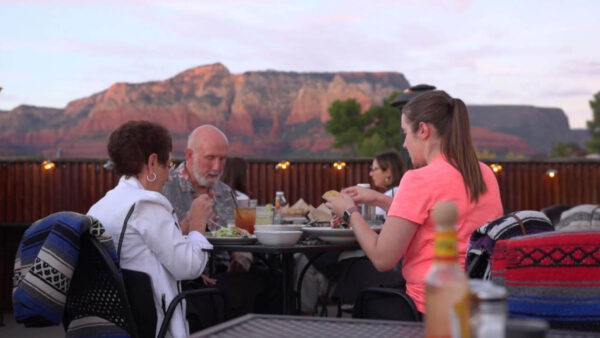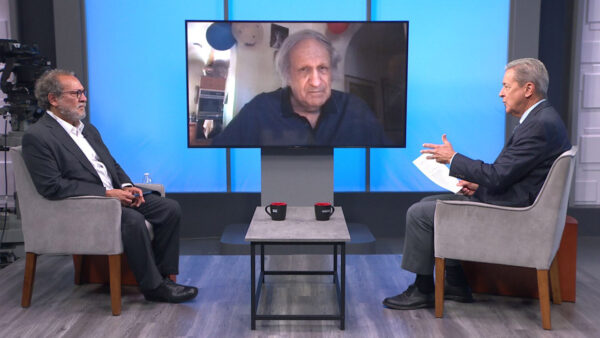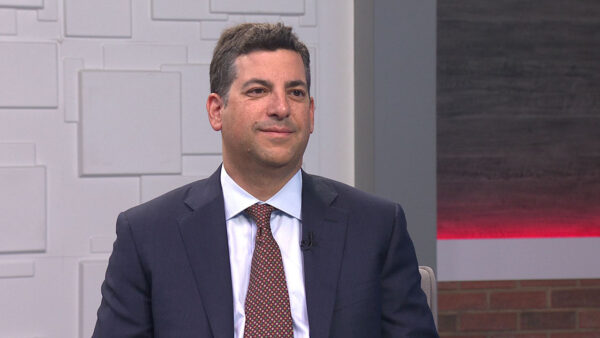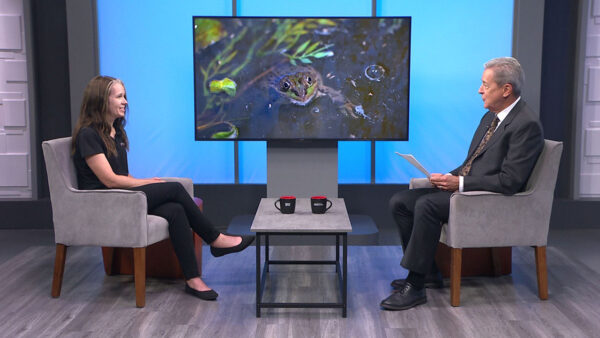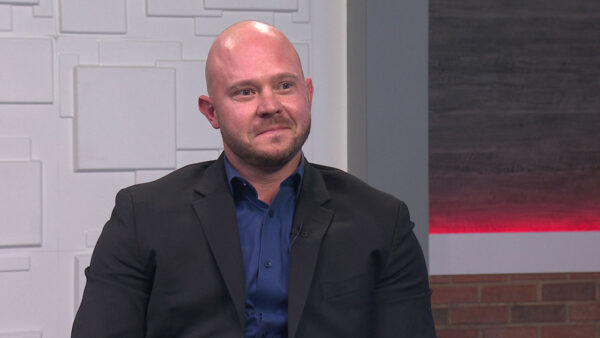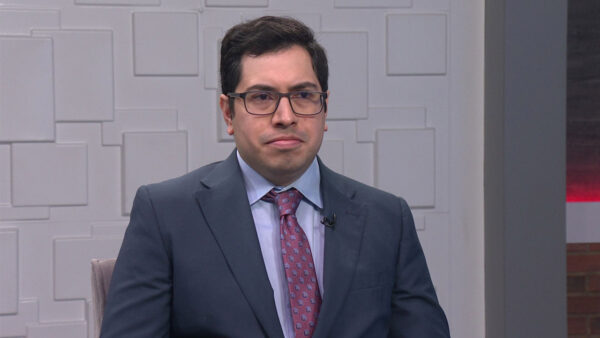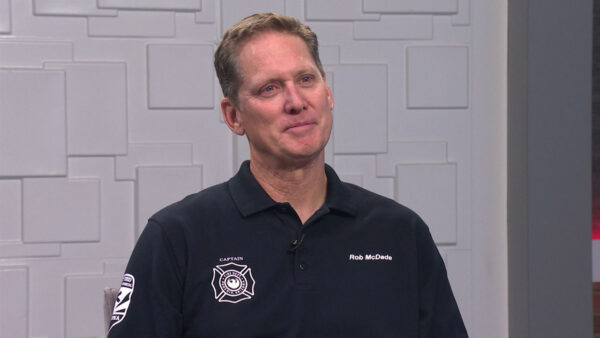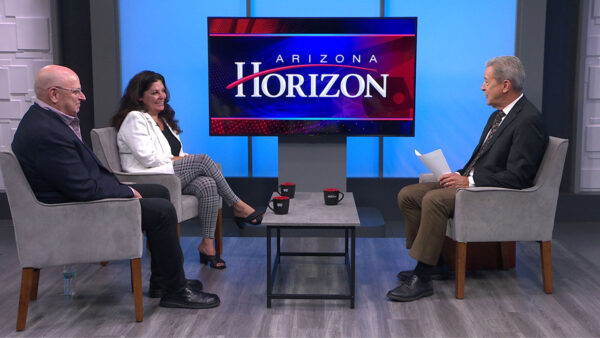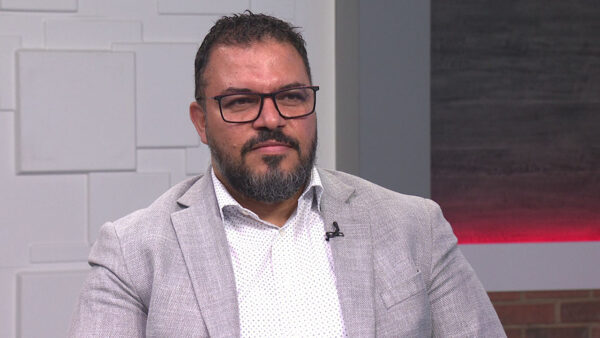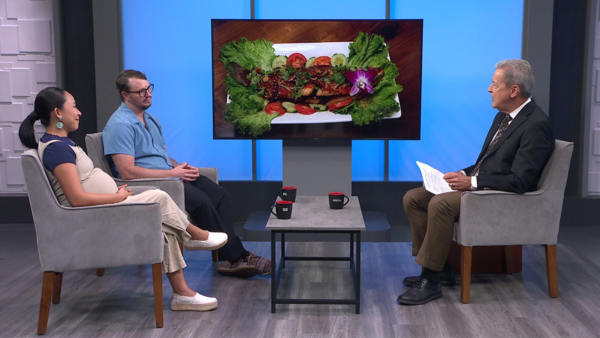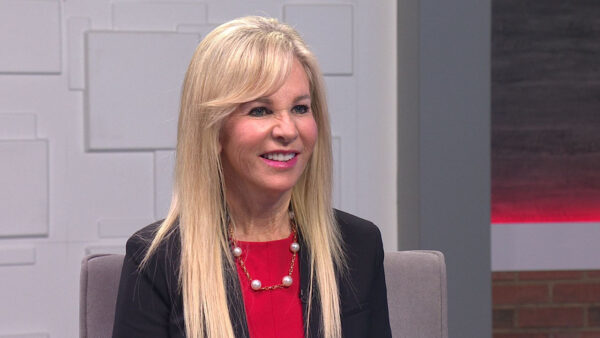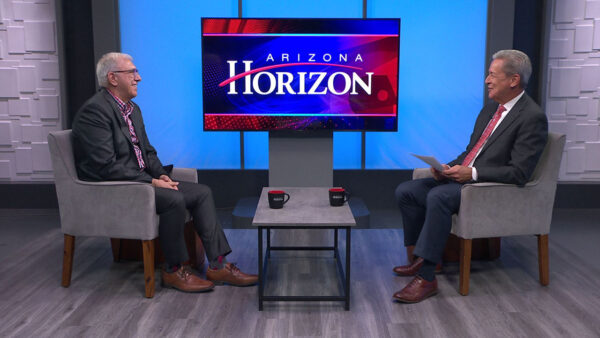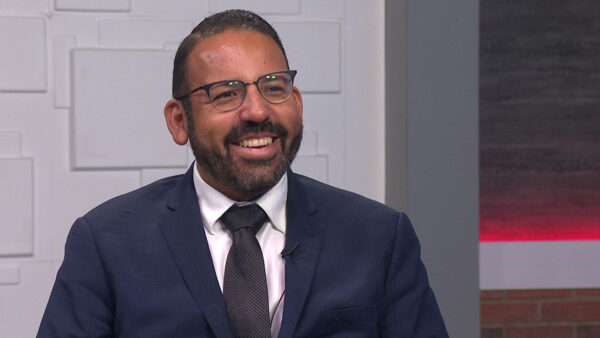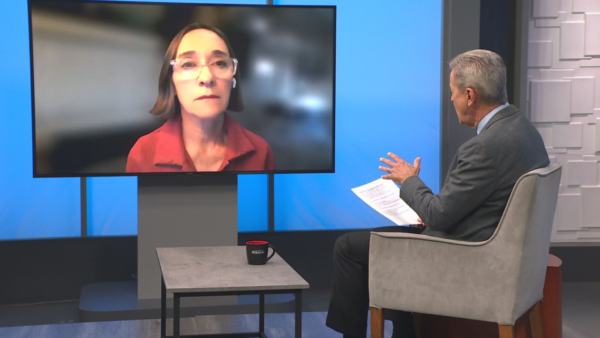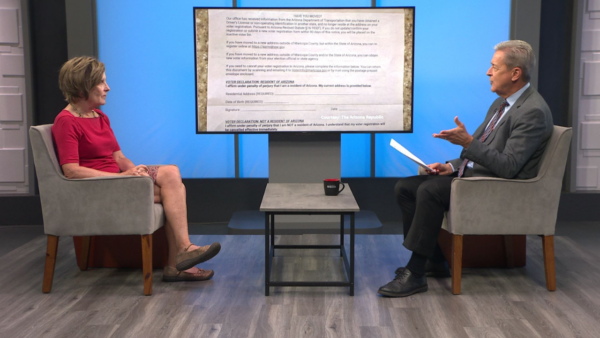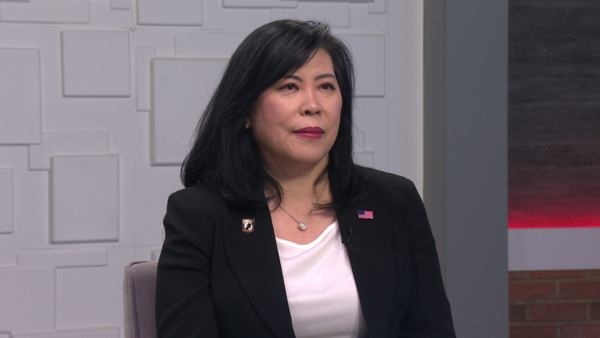Arizona State University researchers have created a supercapacitor that you can eat. The supercapacitor could be used to power a camera or wipe out E. coli. Certain foods can store and conduct electricity and when sandwiched together, they create a supercapacitor – a high-capacity electrical component that can store electrical energy temporarily. ASU associate professor of mechanical engineering Hanqing Jiang (Han-ching Gee-ang) and research team member Wenwen Xu (Wen-wen Shu) will tell us more about their discovery.
Ted Simons: Good evening, and welcome to Arizona Horizon. I'm Ted Simons. A group of education advocates today called for more education funding, this after passage of prop-123, which puts $3.5-billion into schools over the next 10 years. But advocates say that those prop-123 funds were supposed to go to education in the first place and that schools are still down $1.2 billion from pre-recession levels. Governor Ducey has said that the next step for Arizona education is to focus on outcomes, including an improvement in test scores and college attendance rates. President Obama recently signed into law the "Defend Trade-Secrets Act," which allows companies to file civil-lawsuits for trade-secrets violations under federal law. Here to explain why this is a big deal for Arizona companies is Kim War-Shawsky ,of phoenix law firm, Ballard Spahr.
Ted Simons: Good to have you here. Thanks for joining us.
Kim Warshawsky: Thank you.
Ted Simons: What exactly is the act?
Kim Warshawsky: This is a new federal law to allow civil remedies under federal law. Trade secrets was the one area of intellectual property not protected. Lawyers can come in to federal court and claim trade secret protection.
Ted Simons: So basically, prior to this civil action only under state law?
Kim Warshawsky: Yes, only under state law. There was what was called the Uniform Trade Secrets Act. As each state adopted the act, they had different changes. The federal law does not replace the state laws but supplements them and provides a common ground for trade secrets.
Ted Simons: We hear about this all the time. So the state laws still exist. Still on the books?
Kim Warshawsky: They do still exist. Two levels of protection. From an employer perspective, this allows the employer to go into federal court and to know at the outset how the law is going to be interpreted without taking into account various state changes and idiosyncrasies. A trade secret is anything that a business has that provides value to the business. And importantly, it's secret. So something the company holds near and dear like customer list, pricing models. The -- it's something important and valuable and not something widely distributed.
Ted Simons: When a trade secret is considered stolen, how do you know?
Kim Warshawsky: Well, you tend to see ex-employees going out to former customers or pricing information. Under the old state laws, you'd see companies that would sue if an employee left and would go to a competitor. And you would see a lot of employers suing under the inevitable disclosure doctrine. This employee was working for me, now working for my competitor. This employee had access with my trade secrets.
Ted Simons: As far as remedies are concerned, punitive damages, those sorts of things?
Kim Warshawsky: Yes. There is punitive damages and attorney's fees. But there's a caveat. Under the Trade Secrets Act that Obama just signed, employees have immunity if they disclose trade secrets to the government as part of an investigation. It's whistle-blower protection. Employers now have to be careful that in their employer agreements it provides notice to the employees of this immunity. If the employers do not provide notice, then punitive damages will not be available.
Ted Simons: Interesting. I notice as well the ex parte seizure orders. What's that about?
Kim Warshawsky: Yes. What you see on TV when the sheriff's office comes in and grabs the goods. Here, employers have an opportunity if there's been trade secrets that's been stolen and you meet certain requirements. You have the opportunity to go in without notice to the other side and grab the trade secrets. From there, the employee or accused company has 7 days or request a hear and going the court holds those trade secrets protected. The key with the seizure order though is you have to show high level of proof. You have to show extraordinary circumstances. If the trade secrets were to be out there in a possession of the other side that you would suffer extreme damage and the trade secrets would evaporate.
Ted Simons: The idea being you are doing it to stop these secrets from being passed on.
Kim Warshawsky: Well, and also if something is not done now, the remedy at the back end of the case will not make the harmed Plaintiff whole. It's cautioned this is a remedy. This is going to be a difficult remedy based upon the way the law is written to obtain. Here again, there's also some concern as the law was being passed that employers would use this seizure remedy as a way to embarrass the other side. If there has been publication of the seizure order or the request, that shuts down the request. We can't have games in the media.
Ted Simons: Okay. Good idea to update confidentiality agreements?
Kim Warshawsky: It's absolutely essential to update the agreements. If you don't provide the employees with notice of their whistle blower immunity, then there's certain remedies that are not available for the employers should the trade secrets be taken. We are advising all of our clients to go ahead and update your confidentiality agreements. Any written agreement you have with your employee dealing with confidentiality and secret business information must be updated.
Ted Simons: And this is not retro- active; correct?
Kim Warshawsky: No, it's not. The day President Obama signed the law is the day it starts. We've seen a few lawsuits being filed across the country now. We don't know how it's going to play out. We don't have the federal protection until the federal law.
Ted Simons: And last question here, bottom line just kind of brings uniformity to the whole situation?
Kim Warshawsky: Absolutely. It brings a level of stability. Different states have different laws in what is a trade secret and what isn't. And whether or not the trade secrets have been miss appropriated. One other key issue that was mentioned earlier, this law makes it clear the inevitable disclosure doctrine is not going to be accepted. Because an employee moves from one employer to another and has the potential to use trade secrets will not be the basis going forward. That's protection for the employees. They cannot mis appropriate the trade secrets.
Ted Simons: Good stuff. Good to have you here.
Kim Warshawsky: Thanks so much.
Ted Simons: Tonight's edition of Arizona technology and innovation looks at something called "edible electricity," specifically a super-capacitor that can be eaten. Here to tell us more about their research into ingestible electronics is ASU associate professor of mechanical engineering Han-Ching Jiang, and research team member Wenwen-Shu.
Ted Simons: Good to have you both here. Thanks for joining us.
Hanging Jiang: Thanks for having us.
Ted Simons: Explain, please.
Hanging Jiang: Okay. So the whole story started examining the landscape of current -- has been revolutionized. But problem for current -- patient has complications possibly. So recently biodegradeable appear so only one time is they dissolve. But they have very limited choice. Metal, copper and not -- they are trying to ask ourselves a question. Other way to excess to the human body except the -- think about it. Can we use that system?
Ted Simons: That's how it all started. And you wind up with what food that's electronically -- what do we got here? What's going on?
Hanging Jiang: Actually, we choose the materials based on our experience of our lives. So we choose, like, for example, we choose cheese. So it can work as segregation layer. And activated charcoal has high electric conductivity.
Ted Simons: So it's activated charcoal. Indian food has gold leaf. I think we have a video here to show. Take us through exactly what we're watching here as far as this stuff being made. So you got your egg there.
Wenwen Xu: Hanging Jiang: It's founding layer. And the charcoal can solve electrons.
Ted Simons: So you add water there. Looks like we're watching the cooking channel. More egg whites. Gold foil. What's going on here? What's this all about?
Wenwen Xu: The gold is a good electric conductivity material. So we choose gold.
Ted Simons: And you are stacking stuff up here. So what happens once you swallow it? What happens once it gets inside you?
Hanging Jiang: The water gets into the system. Still intact. So can deliver currents to the GI system.
Ted Simons: Is it entirely biodegradeable?
Hanging Jiang: The interesting story, the department asked --
Ted Simons: It's a good question. So once it's inside super capacitors do what? Is this like an endoscopy?
Wenwen Xu: Can provide current and can kill the harmful bacteria in your digestive system.
Ted: So it can do that?
Wenwen Xu: It can.
Ted Simons: Can you attach a camera along the line?
Hanging Jiang: Yes, of course.
Ted Simons: Could be like an endoscopy.
Hanging Jiang: Can be added power source.
Ted Simons: What does it taste like?
Hanging Jiang: Crispy cheese.
Ted Simons: Have you tried it? I know it's all food.
Ted Simons: It can power a camera.
Wenwen Xu: Deliver current and locally environment of bacteria.
Ted Simons: What we saw there was a small bite. Is that the size of bite you need?
Hanging Jiang: Yeah. This is a small size, single size of the medicine capsule.
Ted Simons: Any concern of contaminating? What if something breaks? There's nothing to break though. It's food.
Wenwen Xu: Yeah. It's totally safe for human.
Wenwen Xu: That's the biggest advantage of this one. The most friendly takes the GI tract. Not concerned about the contamination. You eat food everyday.
Ted Simons: So what's next in all this? You can make these on 3D printers. Is that the goal?
Hanging Jiang: The next step they can do function. This one is a big step forward. Fully engage with the GI track. Kill bacteria. We can sense the bacteria in real time and in that area. The food will chill very good and other material. Big challenge.
Ted Simons: There's a lot of food out there. Last question for you. What do you friends say when you tell them what you are doing? Do they think it's nuts?
Wenwen Xu: Amazing. Are you kidding me?
Ted Simons: It is amazing. And you are not kidding. Good to have you both here. Congratulations. Thanks for joining us.
Wenwen Xu: Thank you.
Ted Simons: Tonight's edition of Arizona art-beat features Dolan Ellis, who is celebrating his 50th year as Arizona's official state balladeer. [ Singing ]
Ted Simons: We welcome Dolan Ellis to Arizona Horizon.
Dolan Ellis: Good to see you again.
Ted Simons: Wonderful to be here.
Dolan Ellis: That is my favorite Steven song. He wrote it while in cave creek.
Ted Simons: Yes, he did. Harolds Cave Creek. The man with the big hat. 50 years.
Dolan Ellis: 50 years, Ted. I can't believe it's been that long. They tell me it has.
Ted Simons: By now, you should know what your official duties are. What are they? What do you do?
Dolan Ellis: Well, I write songs, I take photographs and I sing about Arizona to help people to remember what this wonderful state is all about.
Ted Simons: When you first -- 1966.
Dolan Ellis: 1966.
Ted Simons: Did you succeed someone or are you the first and only?
Dolan Ellis: It was the first and only. It was created for me. And I was not only Arizona's first state balladeer, I was the first in the United States of America.
Ted Simons: Did they ask you? Did you campaign for this?
Dolan Ellis: It was Governor Goddard who created it. I had just come back from being with the new Christy Minstrels. We were pretty big at the time and I came back. And I came back to do what I'm doing today. I've always had this calling to be in my state. And the governor recognized that and made me the balladeer. And every governor since then followed that.
Ted Simons: When you were first named, what did you expect to do? And now, when you look back, were you close or very different than what it turned out?
Dolan Ellis: Well, I kind of made up my own job description. By the way, it doesn't pay anything. It's an honorary position. But yes, I just -- I thought that's just what I want to be in life. Just what I want to do. I've received a lot of awards and honors before that. And I could have taken that certificate and put it on my mantle. This is it. This is what I want to be.
Ted Simons: You pursued a commercial career in the sense of joining. You guys were on TV shows.
Dolan Ellis: Well, I had to make money. They don't pay anything on this job.
Ted Simons: What happened with that group? Sounds like you realized maybe this life isn't for me.
Dolan Ellis: Absolutely, Ted. I have always had this unexplainable calling and in the desert in particular.
Ted Simons: Yeah. Did you ever second guess that decision early on?
Dolan Ellis: I had no choice.
Ted Simons: In the sense --
Dolan Ellis: I've always had such a drive. I moved here from Kansas. When I was a kid in Kansas, I knew I wanted to live in Arizona. Honestly, it's spooky. It really is.
Ted Simons: You have reunited with the group to some extent; correct?
Dolan Ellis: Yes. I traveled and rejoined the group about 12 years ago. And I've been traveling nationally doing nostalgic programs with them and concerts. And I just retired about a year and-a-half ago to come back to Arizona full time and to really focus in on my work on the next chapter of my life.
Ted Simons: Let's talk about that previous chapter. Especially the one in Kansas. You moved here in 1959. Why?
Dolan Ellis: I just knew that I wanted to be here. I knew, honestly. At 6 years of age, I knew I wanted to live in Arizona. When I got old enough to make my own decisions, I went to Kansas University. When I got out of school, I came directly to Arizona. I was in the television industry with channel 10, KOOL TV. I went to work as a floor man and became a switcher and audio man. Did everything there was to do in television.
Ted Simons: As a kid, you probably watched a lot of movies. John Wayne movies.
Dolan Ellis: I think that had a lot to do with it. I think Roy Rogers movies. I think also that national geographic magazine had a lot to do with it.
Ted Simons: When you came out here and saw Arizona firsthand. Did it meet expectations?
Dolan Ellis: Absolutely. What I saw in Arizona as an artist, I think a lot of people weren't aware of. That is I could see the embers of the old west still alive in the culture out here. And I knew it wasn't going to last. This place was exploding in those days. And I just knew that once those old cowboys and trading post and once those old ways of Arizona disappeared, that it wouldn't be but another 20-30-40-50 years before it would be gone. So I absorbed it like a sponge. I was like a dog on a bone. I road and I took pictures. And I have a wonderful collection. I've written over 300 songs about Arizona people, places and things in the old ways.
Ted Simons: 50 years. In a second here, I'm going to ask you to play us out here. I do want to ask about the importance of music in your life. When you sit back, it is your life.
Dolan Ellis: Absolutely. Yeah. I'm now 81 years of age and knock on wood, my health is really pretty good. And I think it's the music that has done it for me. To be able to have and to be able to write that poetry and express myself, I've been a very lucky man.
Ted Simons: You have, indeed. Congratulations on 50 years as the state's official balladeer. Whatever you want to play and play us out. Congratulations and good to see you again.
Dolan Ellis: Good to see you too. I'll shake your hands before I go to work here. Song about the Bradshaw mountains. The old road was a railroad bed at one time. [ Singing ] Some said he was crazy and logic was hazy and thought through a hole in his hat. Frank Murphy was counting to a track up the mountain. You ought to be smarter than that. He blasted and drilled through the mountains and shovelled away the folks in crown king were all cheering and singing. Yay. [ Singing ]
Dolan Ellis: Now, you see. There isn't that much difference between drilling holes in the side of a mountain as there is for drilling holes in the side of a mountain for a gold mine. Except, of course, in railroad tunnels, don't usually find gold. I repeat, you don't usually find any gold. [ Singing ] [ Singing ] [ Singing ] Now up the mountain he built through the rocks and the silk, 12 switch backs up the sheer mountain side 6,000 feet up to meet turkey creek. But he worked not in vain cause he got that train to the rich Bradshaw mother load mines, the engine burned cold and turned it to gold on the impossible railroad lines they said it couldn't be built. [ Singing ]
Video: Arizona horizon is made possible by contributions from the friends of Arizona PBS. Thank you. Morris, Hall and kinghorn has been serving Arizona's estate plan since 1970. For more information: Morristrust.com or 602-249-1328.
Hanqing Jiang: ASU associate professor of mechanical engineering, Wenwen Xu: ASU Research Team Member
